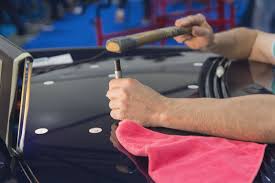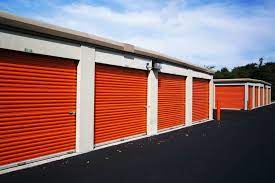
A Comprehensive Guide to Car Hail Damage Repair
Understanding Car Hail Damage
Hailstorms can be a car owner’s worst nightmare, leaving behind dents, dings, and shattered glass. The severity of hail damage can vary depending on the size and velocity of the hailstones, but even minor dents can decrease the value of your vehicle and lead to further issues if left unaddressed.
Assessing the Damage
Before diving into repair options, it’s crucial to assess the extent of the damage. Begin with a thorough inspection of your vehicle. Look for dents on the roof, hood, trunk, and side panels. Don’t forget to check the windows and windshield for cracks or chips. It might be helpful to take photographs of the damage for insurance purposes.
Reporting and Insurance Claims
Once you’ve assessed the damage, the next step is to report it to your insurance company. Many comprehensive auto insurance policies cover hail damage repair, but it’s essential to check your policy’s specifics. Provide your insurer with photos and a detailed report of the damage. An adjuster will likely inspect the vehicle in person to estimate the repair costs.
Choosing a Repair Method
There are several methods to repair hail damage, each suited to different levels of severity.
Paintless Dent Repair (PDR)
Paintless Dent Repair is a popular method for fixing minor dents without affecting the original paint job. Skilled technicians use specialized tools to massage the dents out from the underside of the panel. This technique is cost-effective and efficient, often completed in a matter of hours. PDR is best for smaller dents where the paint remains intact.
Traditional Dent Repair
For more severe damage where the paint has been chipped or cracked, traditional dent repair might be necessary. This method involves sanding down the damaged area, filling the dents with body filler, and repainting the affected panels. Although more time-consuming and expensive than PDR, traditional dent repair ensures a flawless finish.
Glass Repair and Replacement
Hail can also cause cracks and chips in your vehicle’s windows and windshield. Small chips can often be repaired with resin injections, which fill in the damage and restore structural integrity. However, larger cracks typically require complete glass replacement to ensure safety and visibility.
Selecting a Repair Shop
Choosing the right repair shop is critical to ensuring high-quality work. Look for shops with certified technicians experienced in hail damage repair. Reading customer reviews and seeking recommendations from friends or family can also guide you toward reputable establishments. Additionally, ensure the shop provides warranties on their work for added peace of mind.
Preventative Measures
While it’s impossible to control the weather, there are steps you can take to protect your vehicle from future hail damage. Investing in a car cover designed for hail protection can provide a layer of defense during storms. Parking your vehicle in a garage or covered area is another effective way to shield it from hail.
Conclusion
Car hail damage repair can be a daunting issue for car owners, but understanding the repair process can help alleviate some of the stress. From assessing the damage and filing insurance claims to choosing the right repair method and shop, taking informed steps can restore your vehicle to its former glory. By implementing preventative measures, you can also reduce the risk of future damage, ensuring your car remains in pristine condition.
Investing time and effort into repairing hail damage not only maintains the aesthetic appeal of your vehicle but also preserves its value and longevity. Stay proactive, and your car will thank you for it.




